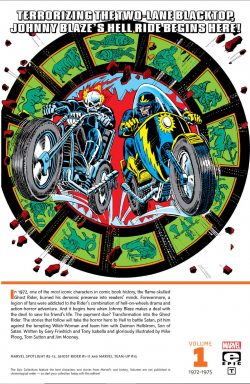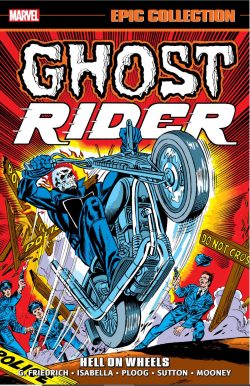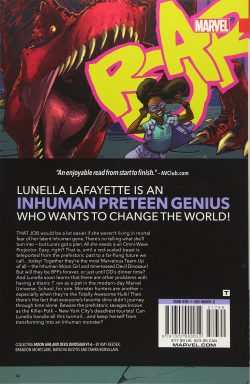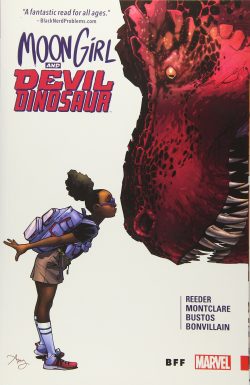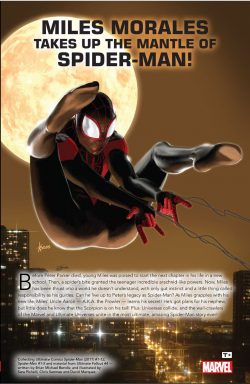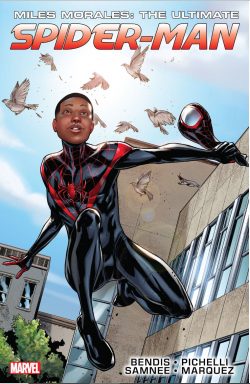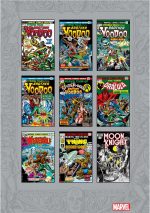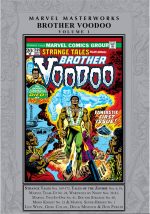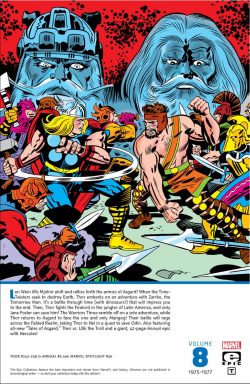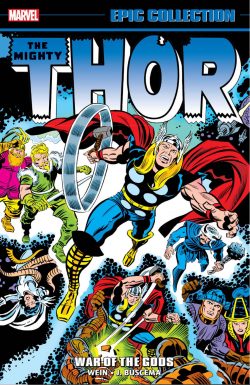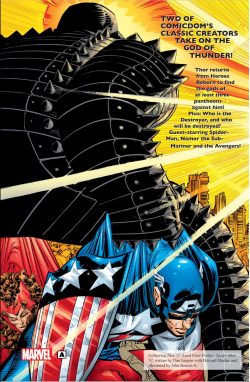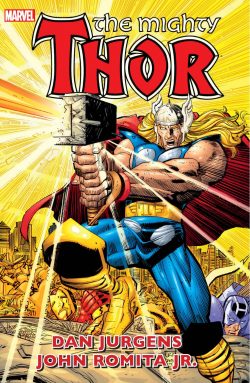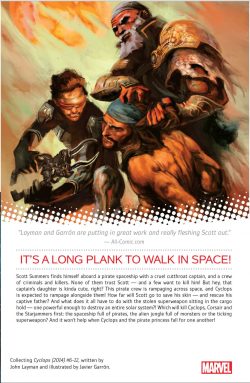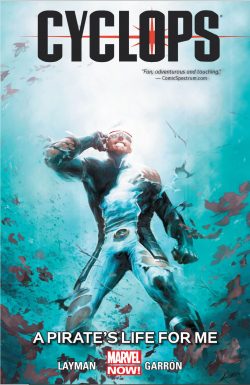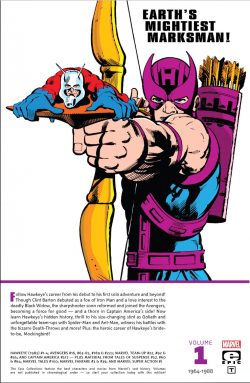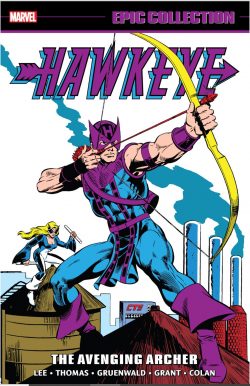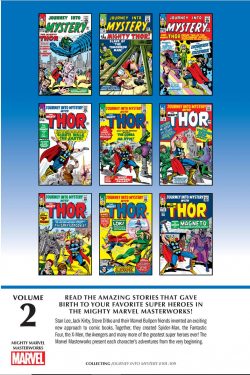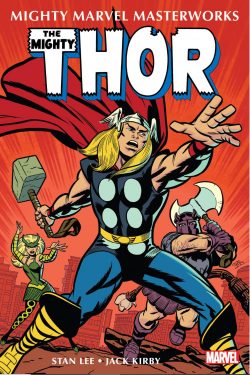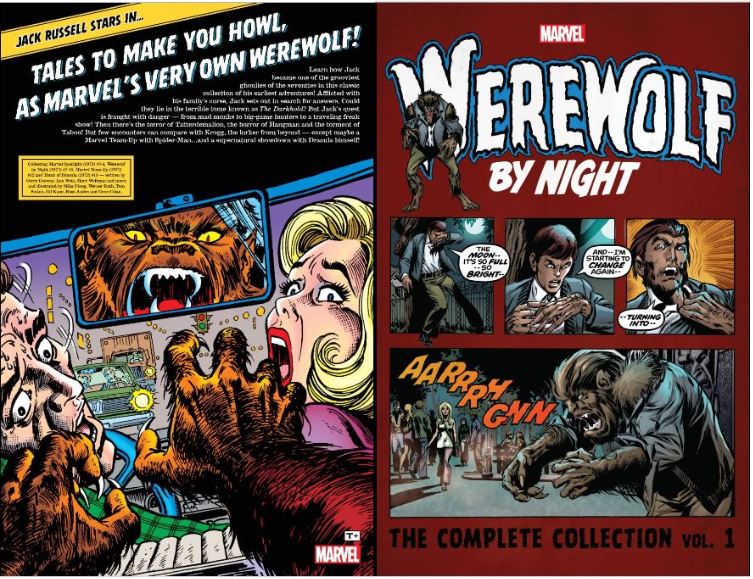
By Gerry Conway, Len Wein, Marv Wolfman, Roy & Jean Thomas, Mike Ploog, Werner Roth, Ross Andru, Tom Sutton, Gil Kane, Gene Colan & various (Marvel)
ISBN: 978-1-30290-839-3 (TPB/Digital edition)
Win’s Christmas Gift Recommendation: Utterly Uncanny and Irresistible Comics Chillers… 9/10
Now a star of page and screen, Werewolf by Night could be described as the true start of the Marvel Age of Horror. Although now technically supplanted by modern Hopi/Latino lycanthrope Jake Gomez – who’s shared the designation since 2020 – the trials of a teen wolf opened the floodgates to a stream of Marvel monster stars and horror antiheroes. Happy 50th anniversary, kid!
Inspiration isn’t everything. In 1970, as Marvel consolidated its new position of market dominance – even after losing their two most innovative and inspirational creators, Steve Ditko and Jack Kirby – they did so employing a wave of new young talent, but less by experimentation and more by expanding proven concepts and properties.
The only real exception to this was the mass-move into horror titles: a response to an industry down-turn in superhero sales, and a move expedited by a rapid revision in the wordings of the increasingly ineffectual Comics Code Authority rules.
Almost overnight scary monsters became acceptable fare on four-colour pages and whilst a parade of 1950s pre-code reprints made sound business sense (so they repackaged a bunch of those too), the creative aspect of the revived fascination in supernatural themes was catered to by adapting popular cultural icons before risking whole new concepts on an untested public.
As always, the watchword was fashion: what was hitting big outside comics would be incorporated into the print mix and shared universe mix as readily as possible. When proto-monster Morbius, the Living Vampire debuted in Amazing Spider-Man #101 (October 1971) and the sky failed to fall in, Marvel launched a line of sinister superstars – beginning with a werewolf and a vampire…
Werewolf By Night debuted in Marvel Spotlight #2 (preceded by western-era hero Red Wolf in #1, and followed by Ghost Rider). In actuality, the series title, if not the actual star character, was recycled from a classic pre-Comics Code short suspense-thriller from Marvel Tales #116, July 1953. Marvel always favoured a using old (presumably already copyrighted) names and titles when creating new series and characters. The Hulk, Thor, Magneto, Doctor Strange and many others all got nominal starts as hairy underpants monsters or throwaways in some anthology or other.
This copious compendium collects the early adventures of a young West Coast lycanthrope re-presenting the contents of Marvel Spotlight #2-4, Werewolf by Night volume 1 #1-15; a guest-shot from Marvel Team-Up #12 and material from the appropriate half of a horror crossover with Tomb of Dracula #18. These cumulatively span February 1972 through 1974.
Following an informative, scene-setting Introduction by long-term Marvel Editor Ralph Macchio, the moonlit madness begins with the landmark first appearance, introducing teenager Jack Russell, who is suffering some sleepless nights…
Cover-dated February 1972 ‘Werewolf by Night!’ (Marvel Spotlight #2), was written by Gerry Conway and moodily, magnificently illustrated by Mike Ploog – the manner of his old mentor Will Eisner. The character concept came from an outline by Roy & Jeanie Thomas, describing the worst day of Jack’s life – his 18th birthday – which begins with nightmares and ends in something far worse.
Jack’s mother and little sister Lissa are everything a fatherless boy could hope for, but new stepfather Philip and creepy chauffeur Grant are another matter. Try as he might, Jack can’t help but see them as self-serving and with hidden agendas…
At his party that evening, Jack has an agonising seizure and flees into the Malibu night to transform for the first time into a ravening vulpine man-beast. At dawn, he awakes wasted on a beach to learn that his mother has been gravely injured in a car crash. Something had happened to her brakes…
Sneaking into her hospital room, the distraught teen is astonished to hear her relate the story of his birth-father: an Eastern European noble who loved her deeply, but locked himself away three nights every month…
The Russoff line was cursed by the taint of Lycanthropy: every child doomed to become a wolf-thing under the full-moon from the moment they reach 18 years of age. Jack is horrified and then realises how soon his sister will reach her own majority…
With her dying breath Laura Russell makes her son promise never to harm his stepfather, no matter what…
Scenario set, with the traumatised wolf-boy uncontrollably transforming three nights every month, the weird, wild wonderment begins in earnest with the beast attacking the creepy chauffeur – who had doctored those car-brakes – but refraining, even in vulpine form, from attacking Philip Russell…
The second instalment sees the reluctant nocturnal predator rescue Lissa from a sick and rowdy biker gang (they were everywhere back then) and narrowly escape the cops only to be abducted by a sinister dowager seeking knowledge of a magical tome called the Darkhold. The legendary spell-book is the apparent basis of the Russoff curse, but when Jack can’t produce the goods he’s left to the mercies of ‘The Thing in the Cellar!’…
Surviving more by luck than power, Jack’s third try-out issue fetches him up on an ‘Island of the Damned!’: introducing aging Hollywood writer Buck Cowan, who will become Jack’s best friend and affirming father-figure as they jointly investigate the wolf-boy’s evil stepdad.
Russell had apparently sold off Jack’s inheritance, leaving the boy nothing but an old book. Following a paper trail to find proof Philip had Laura Russell killed leads them to an offshore fortress, a dungeon full of horrors and a ruthless mutant seductress…
That episode ended on a cliffhanger, presumably as an added incentive to buy Werewolf by Night #1 (September 1972), wherein Frank Chiaramonte assumed inking duties with ‘Eye of the Beholder!…
Merciless biological freak Marlene Blackgar and her monstrous posse abduct the entire Russell family whilst looking for the Book of Sins, until – once more – a fearsome force of supernature awakes to accidentally save the day as night falls…
With ‘The Hunter… and the Hunted!’ Jack and Buck deposit the trouble-magnet grimoire with Father Joquez, a Christian monk and scholar of ancient texts, but are still hunted because of it. Jack quits the rural wastes of Malibu for a new home in Los Angeles, trading forests and surf for concrete canyons but life is no easier.
In #2, dying scientist Cephalos seeks to harness Jack’s feral life-force to extend his own existence, living only long enough to regret it. Meanwhile, Joquez successfully translates the Darkhold: an accomplishment allowing ancient horror to possess him in WbN #3, sparking ‘The Mystery of the Mad Monk!’
Whilst the werewolf is saddened to end such a noble life, he feels far happier dealing with millionaire sportsman Joshua Kane, who craves a truly unique head mounted on the wall of his den in the Franke Bolle inked ‘The Danger Game’. Half-naked, exhausted and soaked to his now hairless skin, Jack must then deal with Kane’s deranged brother, who wants the werewolf for his pet assassin in ‘A Life for a Death!’ (by Len Wein & Ploog) after which ‘Carnival of Fear!’ (Bolle inks again) finds the beast – and Jack, once the sun rises – a pitiful captive of seedy mystic Swami Calliope and his deadly circus of freaks.
The wolf was now the subject of an obsessive police detective too. “Old-school cop” Lou Hackett is an old buddy of trophy-hunter Joshua Kane – and every bit as savage – but his off-the-books investigation hardly begins before the Swami’s plans fall apart in concluding tale ‘Ritual of Blood!’ (inked by Jim Mooney).
The beast is safely(?) roaming loose in the backwoods for #8’s quirky monster-mash when an ancient demon possesses a cute little bunny in Wein, Werner Roth & Paul Reinman’s ‘The Lurker Behind the Door!’, before neatly segueing to a slight but stirring engagement in Marvel Team-Up #12 wherein Wein, Conway, Ross Andru & Don Perlin expose a ‘Wolf at Bay!’ As webspinning wallcrawler meets werewolf, they initially battle each other – and ultimately malevolent mage Moondark – in foggy, fearful San Francisco before Jack heads back to LA and ‘Terror Beneath the Earth!’
Here Conway, Tom Sutton & George Roussos dip into an impeding and thoroughly nefarious scheme by business cartel The Committee. These commercial gurus somehow possess a full dossier on Jack Russell’s night-life, and hire a maniac sewer-dwelling sound engineer to execute a radical plan to use monsters and derelicts to boost sales in a down-turned economy.
However, the bold scheme to promote “growth, Growth, GROWTH” by frightening folk into spending more is ended before it begins since the werewolf proves to be far from a team-player in the wrap up ‘The Sinister Secret of Sarnak!’
Issue #11 revelled in irony as Marv Wolfman signed on as scripter for ‘Comes the Hangman’ – illustrated by incredible action ace Gil Kane & Sutton – in something interesting about Philip Russell and the Committee is disclosed, even as Jack’s attention is distracted by a new apartment, a very odd neighbour and a serial kidnapper abducting young women to keep them safe from “corruption”. When the delusional hooded hero snatches Lissa, he soon finds himself hunted by a monster beyond his wildest dreams…
Concluding chapter ‘Cry Werewolf!’ brings in the criminally underappreciated Don Perlin as inker. In a few short months he would become the strip’s penciller, lasting for the rest of the run. Before that though, Ploog & Chiaramonte return for another session, introducing another maniac mystic and a new love-interest (but not the same person) for WbN #13’s ‘His Name is Taboo’.
An aged sorcerer coveting the werewolf’s energies for his own arcane purposes, the magician is stunned when his adopted daughter Topaz finds her loyalties divided and her psionic abilities more help than hindrance to the ravening moon-beast. ‘Lo, the Monster Strikes!’ then pits the wolf against Taboo’s undead-but-getting better son, delivering unexpected revelation and reconciliation between Philip and Jack Russell. As a result, the young man and new girlfriend Topaz set off for Transylvania, the ancestral Russoff estate and a crossover clash with the Lord of Vampires.
Tomb of Dracula #18 (March 1974) begins the battle with ‘Enter: Werewolf by Night’ (Wolfman, Gene Colan & Tom Palmer) as Jack and Topaz investigate a potential cure for lycanthropy, only to be attacked by rampant menace to humanity Count Dracula. Driven off by the girl’s psychic powers the undead aristocrat realises the threat she poses to him and resolves to end her…
The confrontation and this first tome conclude with Werewolf by Night #15 and the ‘Death of a Monster!’ (Wolfman, Ploog & Chiaramonte) as the demonic duel devolves into a messy stalemate… but only after Jack learns of his family’s long hidden connection to Dracula…
Supplemented with an unused Ploog cover for Marvel Spotlight#4; Kane’s pre-corrections cover to ToD #18 and previous collection covers by Ploog & Dan Kemp, this initial complete compendium also offers a wealth of original art pages (20 in total) by Ploog, Sutton & Andru.
A moody masterpiece of macabre menace and all-out animal action, this book covers some of the most under-appreciated magic moments in Marvel history: tense, suspenseful and solidly compelling chillers to delight any fright fan or drama addict. If you crave a mixed bag of lycanthropes, bloodsuckers and moody young misses, this is a far more entertaining mix than most modern movies, books or miscellaneous matter…
© 1972, 1973, 1974, 2017 Marvel Characters, Inc. All rights reserved.

